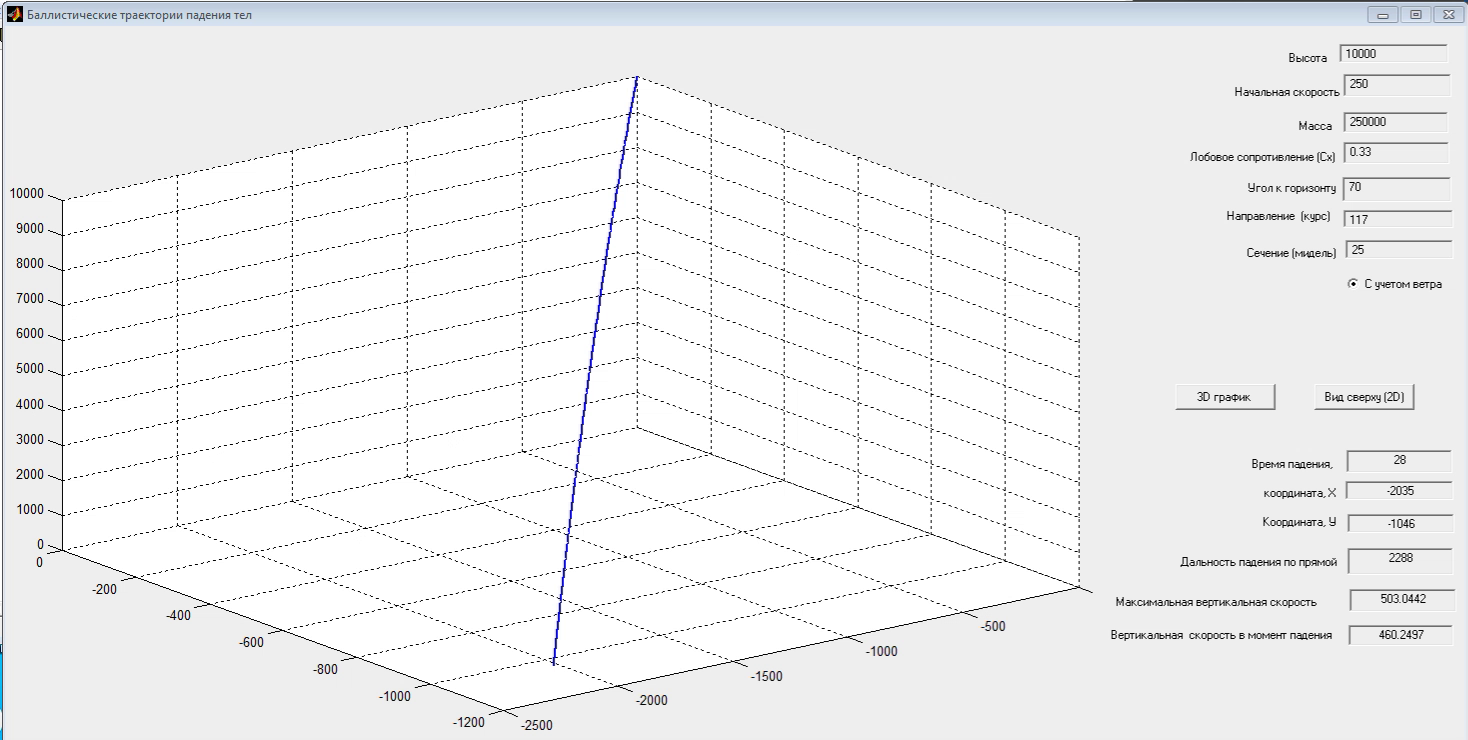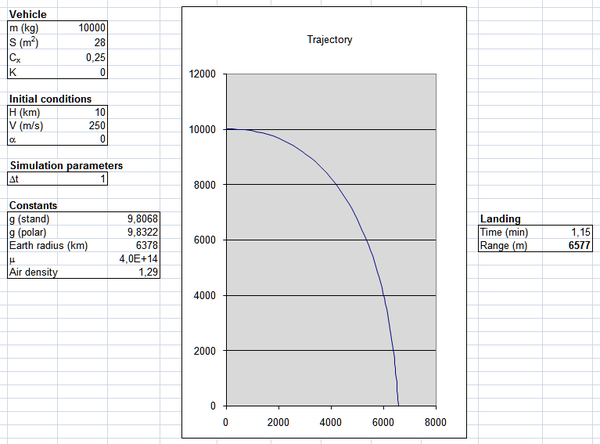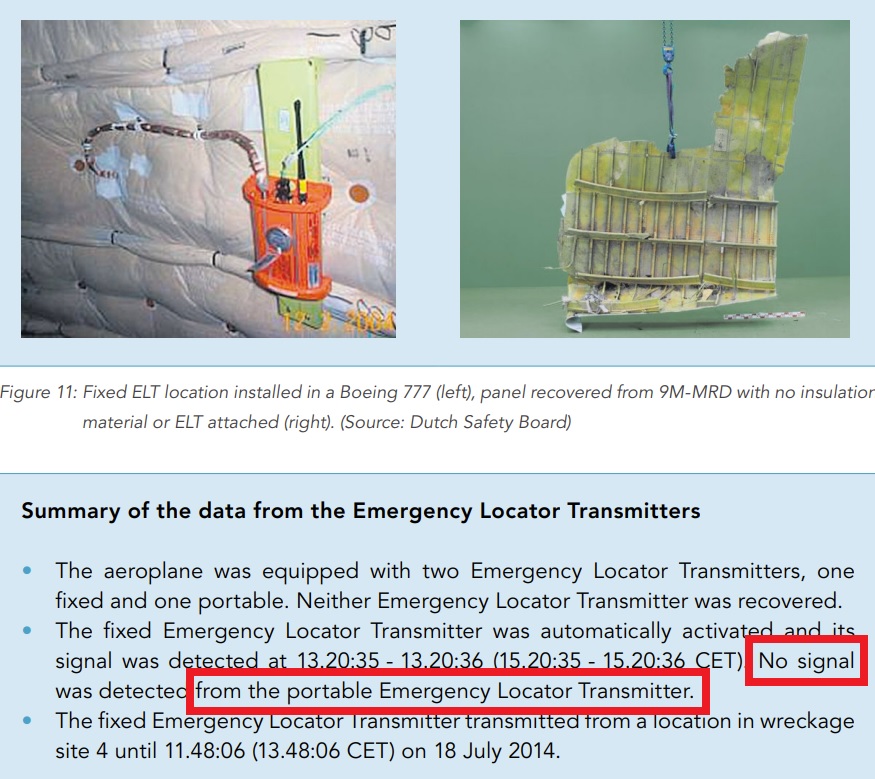OK, the signal can be from fuselag ELT. But it is no better for Bellingcat / DSB / JIT false interpretations.
If the signal is from fuselag ELT, it does not give the strike moment of the missile, but IT GIVES THE MOMENT WHEN THE LAST MOTOR (on the right side) STOPPED WORKING.
The broken cockpit can have been still connected to the fuselage pressed by the drag force 2.3x10m/s²x10000kg = 230kN = 23Mp = 23 "ton".
The cockpit falls without gliding, but the fuselage has gliding flight in addition to free fall under drag. An undamaged Boeing 787 under guinance can fly in glide flight ten times longer without motors from that height and speed.
This is as valid as before.
The accelerations during explosion are not here useful. Explosion as such did not wake up ELT of longitudinal deceleration (acceleration), it was activated from drag deleleration when when cockpit was disconnected from fuselage. Despite deceleration 2 ... 2.6 g, speeds where measured. We can compare them with theoretical functions:
Time, s Measured v, m/s v´(0) = 2.0 g v(t) = 3125 m/(t + 12.5s) v´(0) = 2.6 g v(t) = v(t) = 2403m /(t + 9.6s) v´(0) = 2.3g v(t) = 2717,4m/(t + 10.87s)
0 250 250 250 250,0
1 230 231 226 229,8
2 211 215 207 211,1
According to Newton´s (first and) second law and his drag law, for a body moving in a dragging fluid
v´(t)/v²(t) = constant = v´(0)/v²(0) = 2.3g/vo² = c/m = 23m⁻¹/250² = (2717,4m)⁻¹, when no extra forces influence. c =ρAC/2.
mdv/dt = mv´(t) = - ρACv²(t)/2 = - cv²(t) = the drag force
v´(t)/v²(t) = - c/m = constant = -2.3g/vo² = -23ms⁻²/(250ms⁻¹)² = - (2717m)⁻¹ = -k
Integrating implicitely:
-v⁻¹(t) = -k(t - to), where to is integation constant, which gives
v(t) = k⁻¹(t - to)⁻¹
v(0) = 250ms⁻¹ = vo = -k⁻¹to⁻¹, which gives
to = -k⁻¹vo⁻¹ = - vo/(2.3g) = - 250ms⁻¹(23ms⁻²)⁻¹ = - 10.87s.
The distance d(t) at time t:
d(t) = int v(t)dt = k⁻¹[ln (t - to) - ln (0 - to)] = k⁻¹ ln (1 - t/to) = 2717,4m ln(1 + t/11.87s)
(The density of air ρ depends on height: 1n 10000m it is about 0.5kg/m³, on sea level it is about 1.0kg/m³. We use now the former. If we use the latter for the horizontal fall, it means longer fall time T and longer fall flight D.)
When we know a (trajectory) constant in one point of a trajectory, we know it in every point.
In this case we know at the disconnection point t = 0 both the speed v(0) = 250 m/s and the acceleration v´(0) = -2.3g = -23m/s²
In fall falling distance w(t)
m dw(t)dt = mw´(t) = mg - cw²(t),
w´(t)/(w²(t) - mg/c) = c/m = k, which is taken from the former task using lower air ρ = 1.0.
Let´s define still one coefficient:
k/g = p² = c/(mg) = a²/vo², p = a/vo = 116.6⁻¹m⁻¹s
(m in two meanings: the mass and meter...)
w´(t)/(w²(t) - p⁻²) = gp²:
- p artanh (p w(t)) = (t - t1) gp²,
where t1 = 0 from v(0) = 0.
w(t) = p⁻¹ tanh(gpt)
and falling "height" (from the top):
h(t) = k⁻¹ln cosh(gpt)
Отредактировано Risto_Koivula,_Tampere (2021-10-29 22:39:18)














